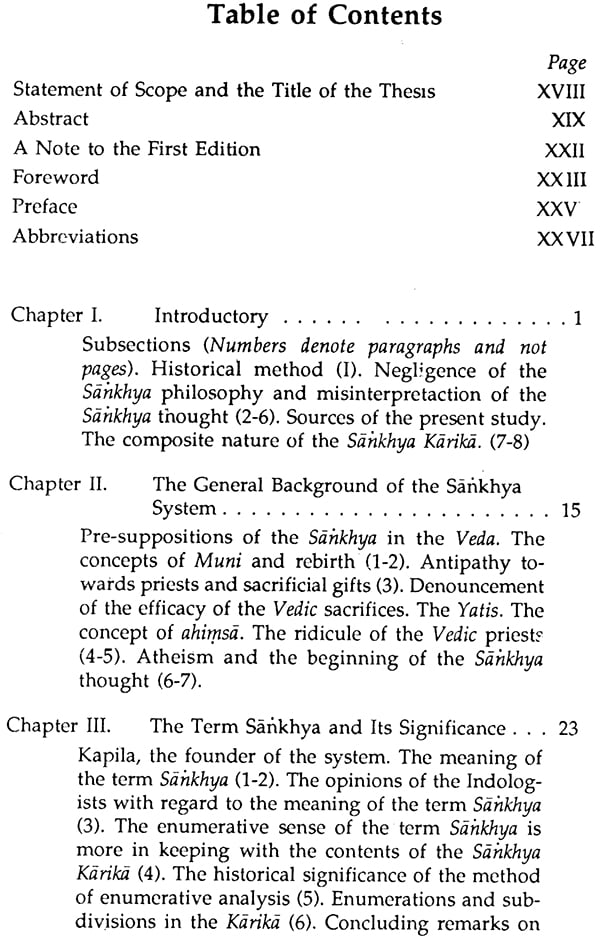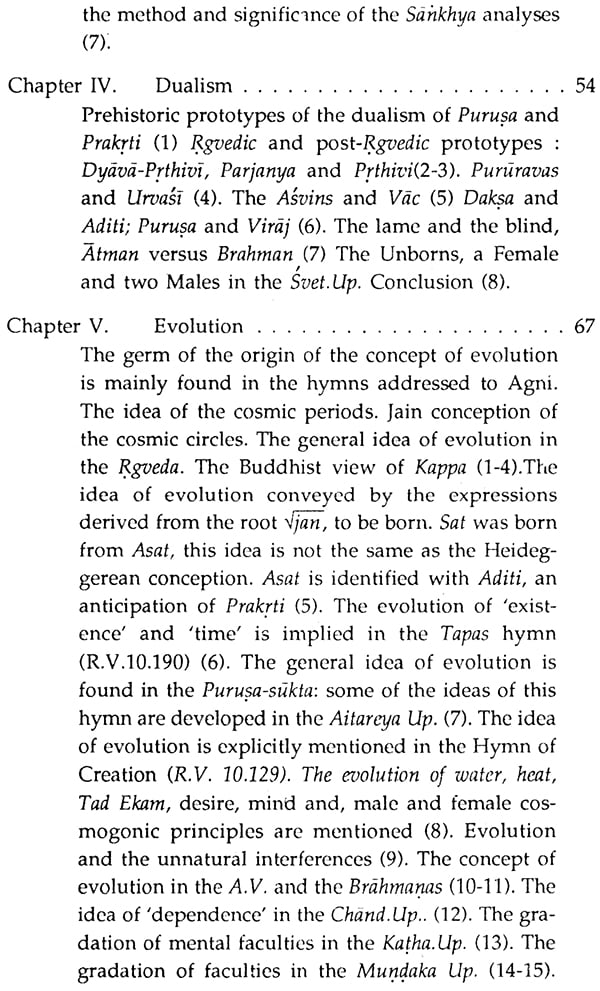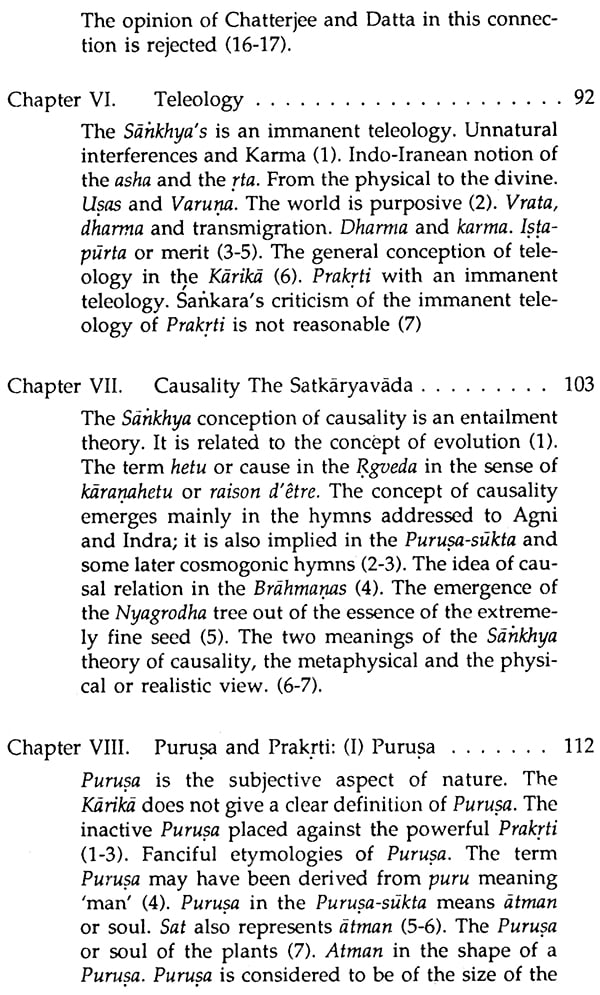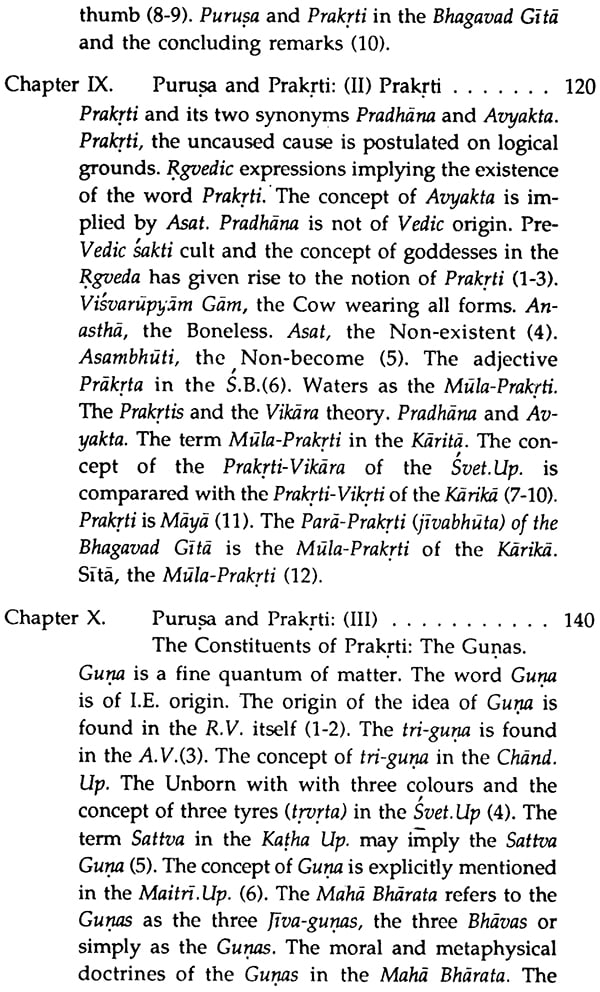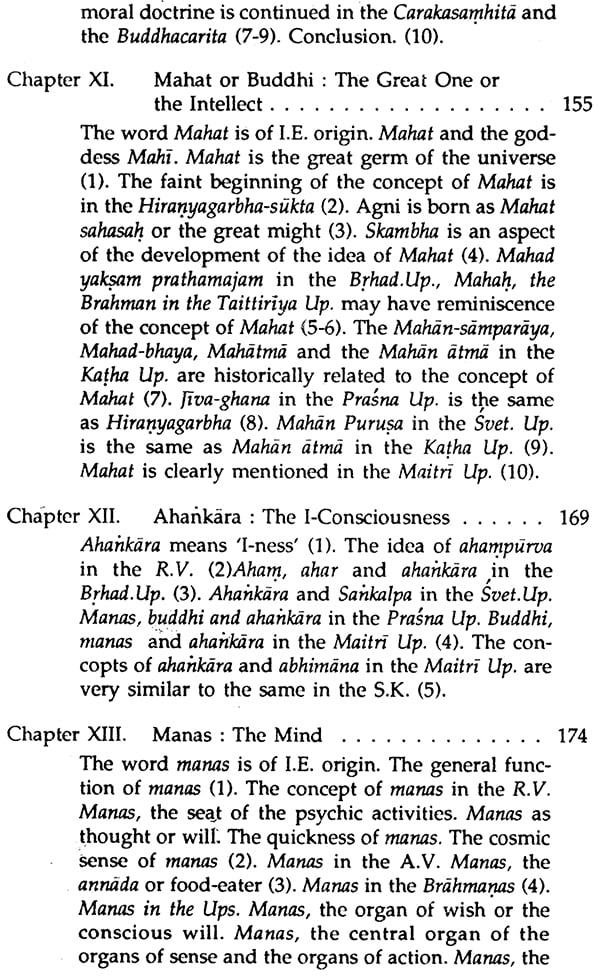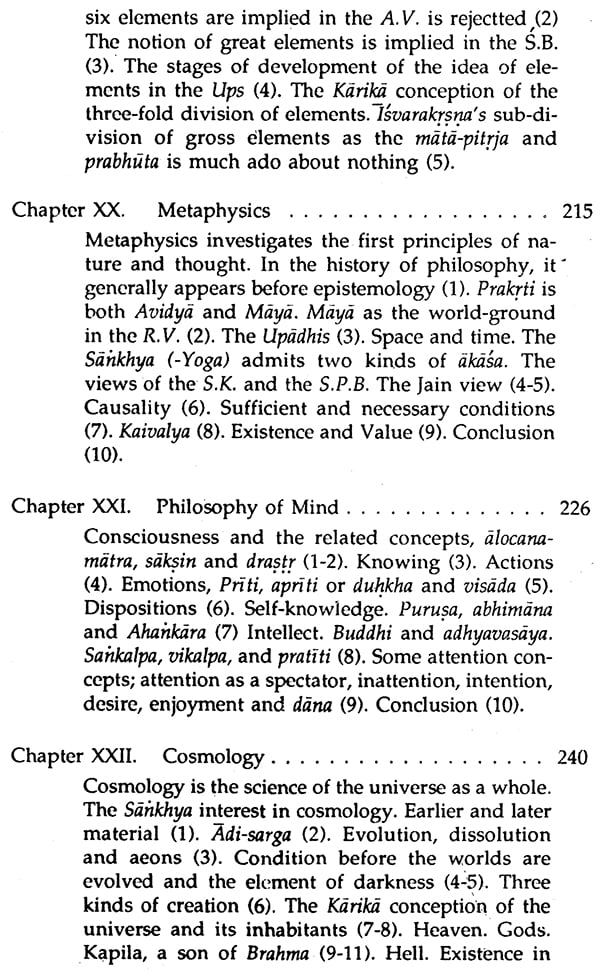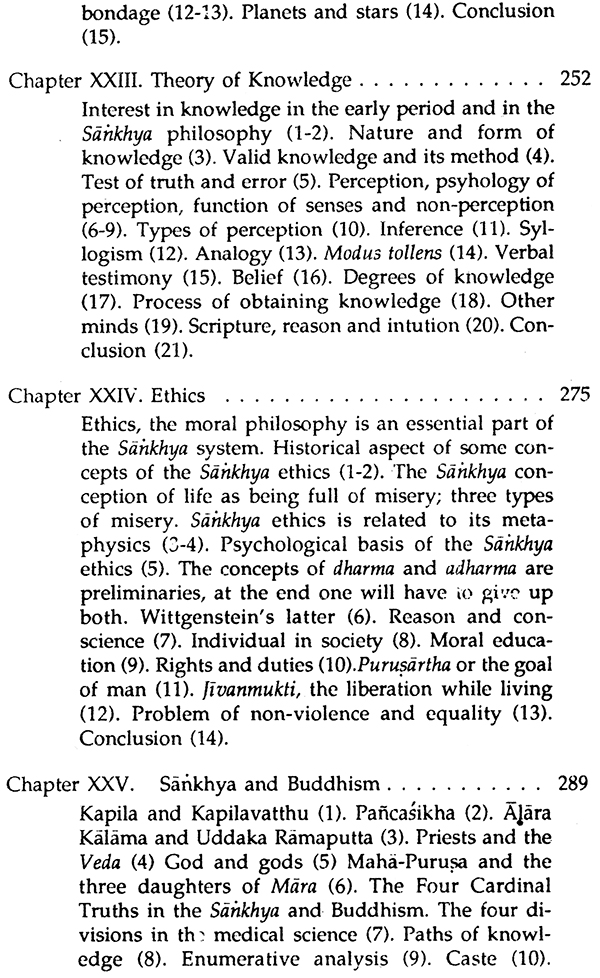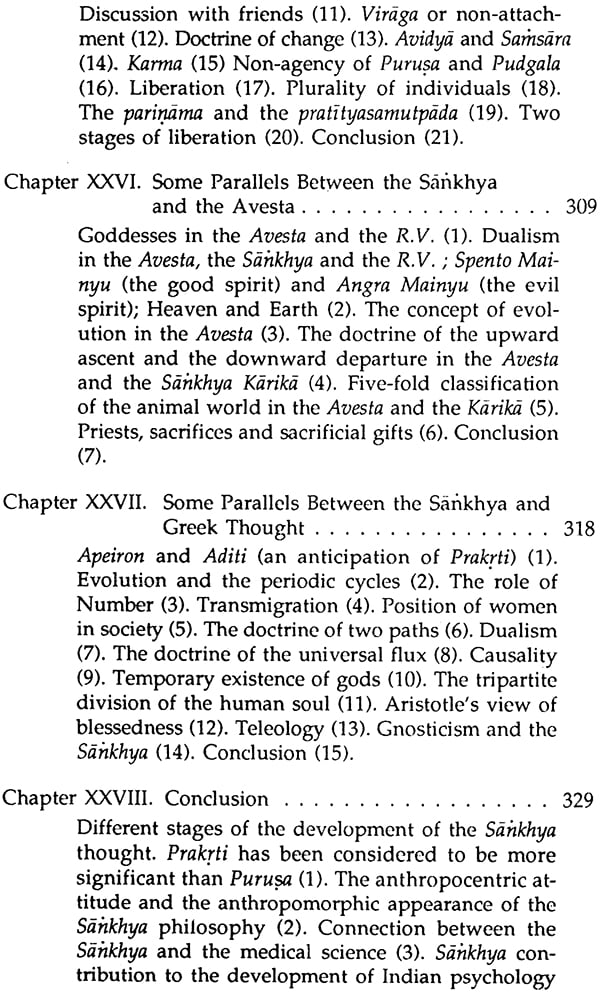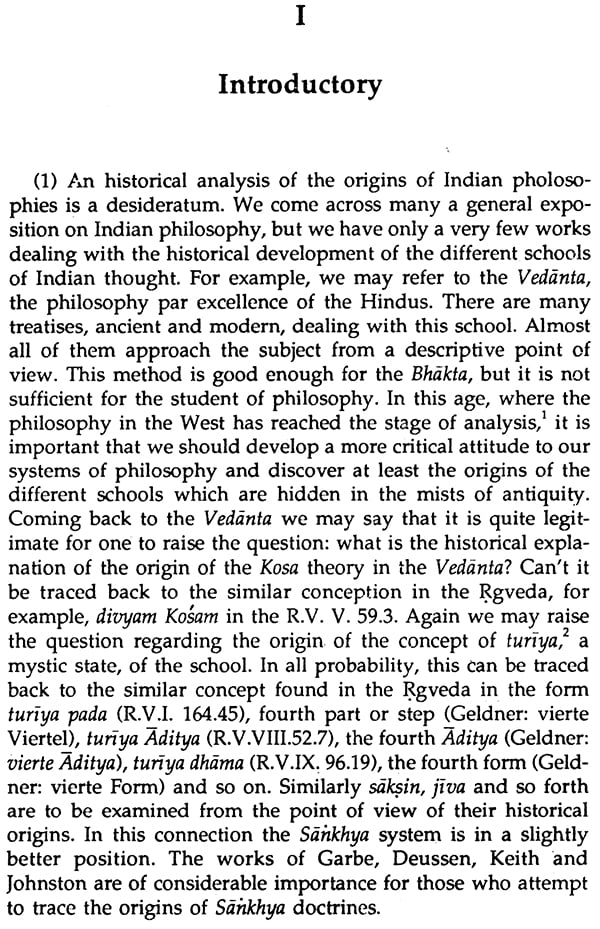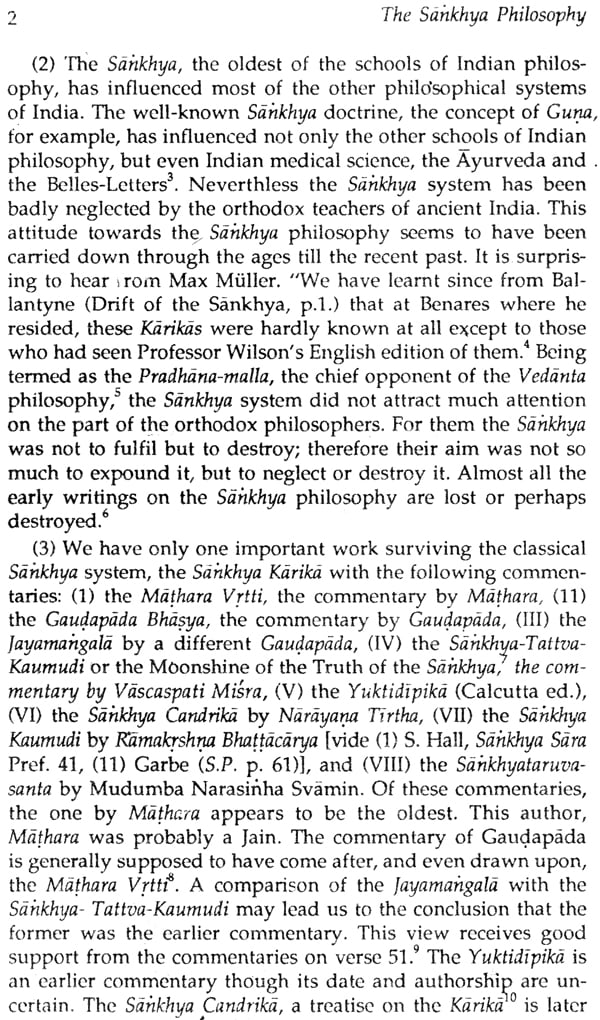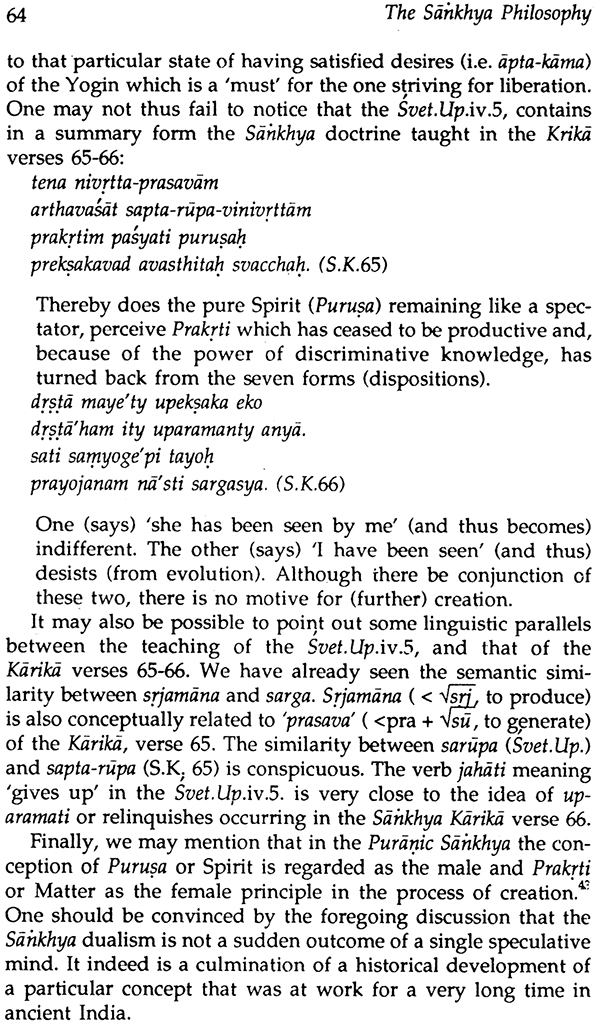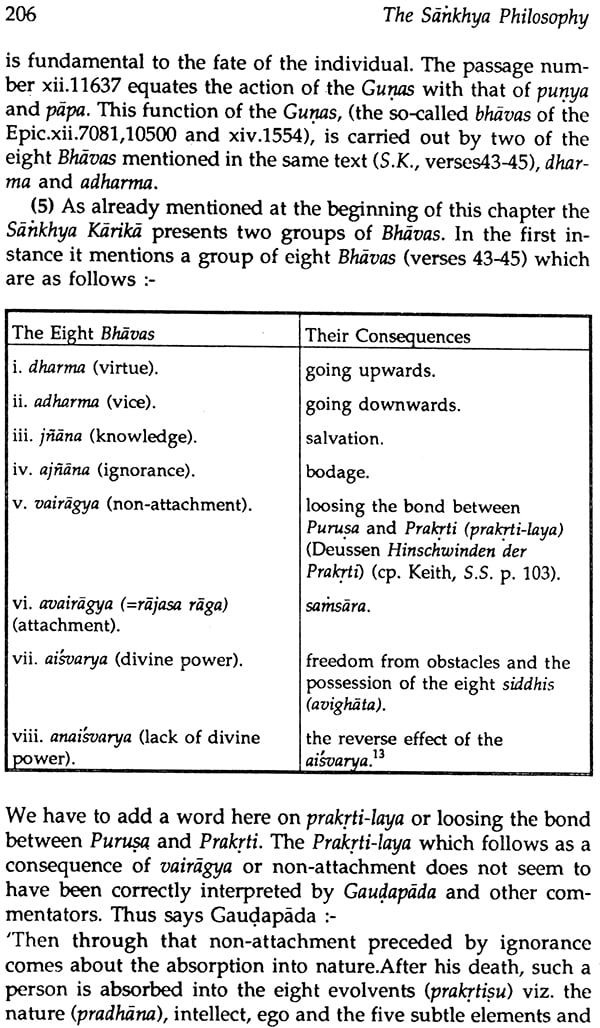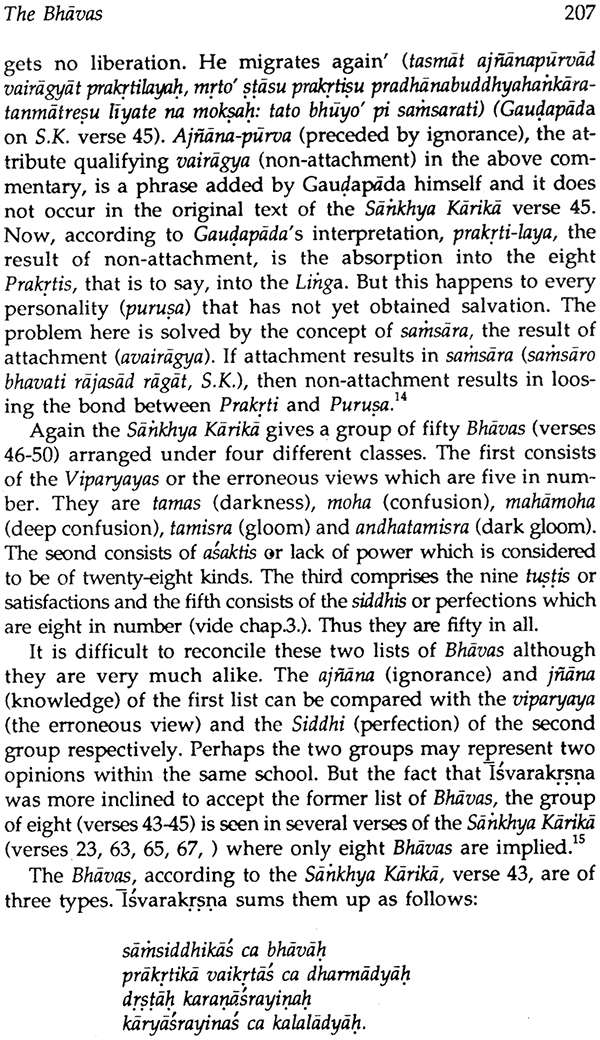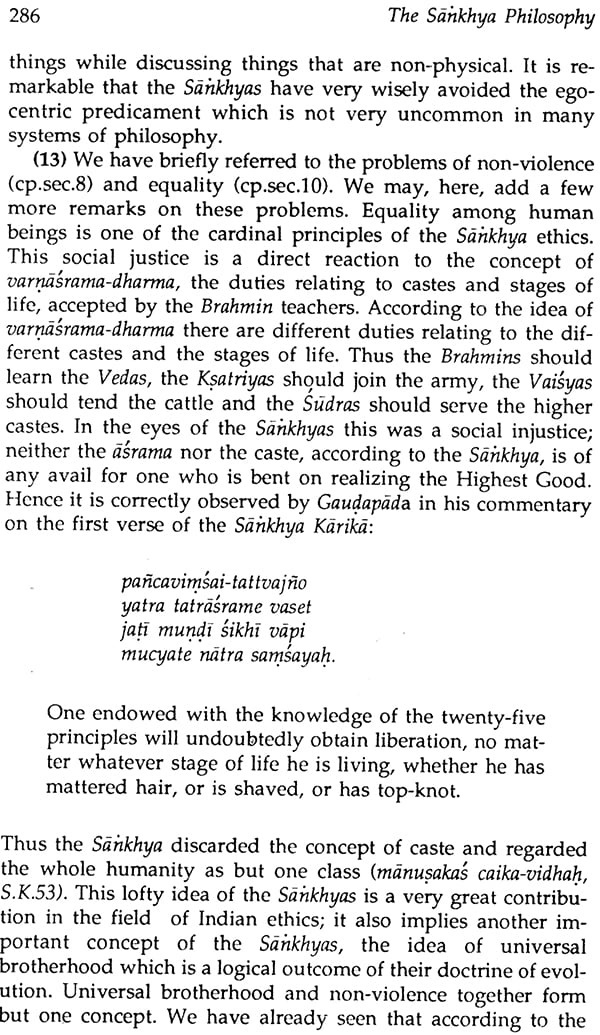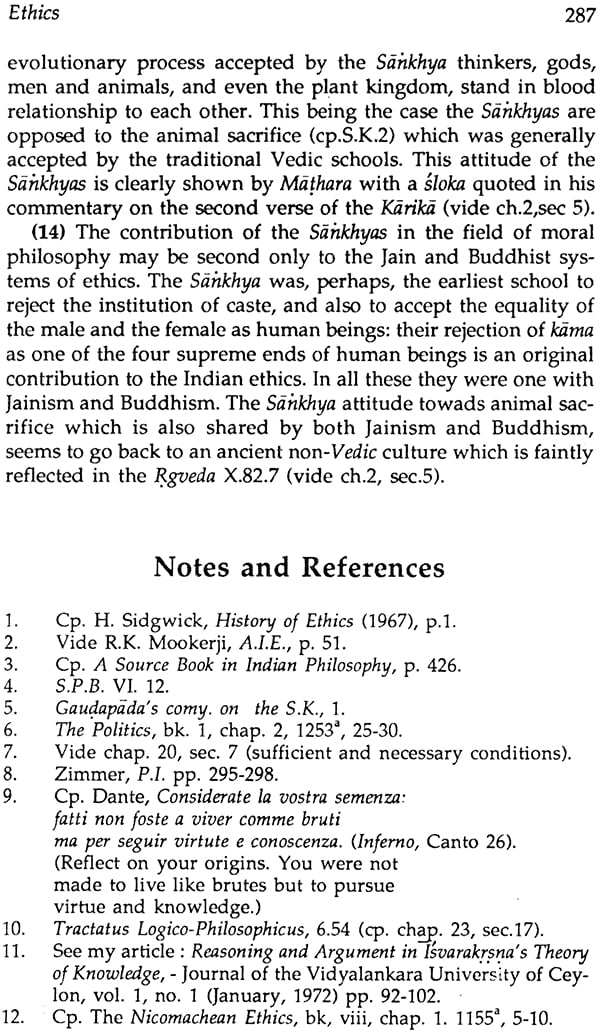
The Sankhya Philosophy (A Critical Evaluation of Its Origins and Development)
Book Specification
| Item Code: | NAS157 |
| Author: | S. G. M Weerasinghe |
| Publisher: | Sri Satguru Publications |
| Language: | English |
| Edition: | 1993 |
| ISBN: | 8170303613 |
| Pages: | 396 |
| Cover: | HARDCOVER |
| Other Details | 8.50 X 5.50 inch |
| Weight | 550 gm |
Book Description
The Sankhya is the oldest system of Indian thought. This study by Professor S.G.M. Weerasinghe is not just another addition to the literature on the Sankhya. It is in many respects a unique piece of research which for the first time combines an in-depth historical and comparative study of the philosophical structure of the Sankhya with a critical appraisal of its influence on the socio-cultural evolution of the Indian sub-continent.
Chapts. I-VII clearly present the general characteristics of the Sankhya philosophy. Its historical ‘evolution through the Vedic Samhitas, the Upanisads, the great epics etc. is then subjected to a lengthy scrutiny in Chapts. VIII-XIX. The philosophical structure of the system is, next, subjected to a critical analysis (chapts. XX- XXIV). A very important section of the work comprises chapts. XXV-XXVII. This is a critical comparison of the Sankhya concepts with (i) Buddhist, (ii) Avestan and (iii) Greek thought.
Chapter XXVIII-conclusion- comprises an illuminating study highlighting the impact of the Sankhya philosophy on various fields of socio-cultural | significance, such as anthropology, medicine, psychology, sociology, gram- mar, literature, history, mathematics, physics and biology, other schools of Indian philosophy, education, linguistics and, logic and dialectic. This work could thus claim to be an unique contribution to the advancement of Indian philosophical and cultural studies.
The Author, a reputed indologist, well versed in Sanskrit, Pali and Prakrits is also highly proficient in the History of Western Philosophy. His knowledge of several European languages and Hindi enabled him to consult all the important writings on Sankhya in these languages. His arguments and conclusions are well documented with direct reference to the original sources.
The Sankhya is one of the oldest schools of Indian Philosophy. It comprises the four main branches of inquiry traditionally required to be included in any given system of thought: cosmology, metaphysics, ethics and epistemology. It has hardly any data derived from the realm of religion. This is an important characteristic of this particular darsana. Hence it is a philosophy in the true sense of the term.
This philosophy explains human nature in the light of the Gunas which are mainly physical in nature. The emancipation, according to this philosophy, is to break away from the magnetic power of Prakrti through the psychological detachment from what is near and dear. This attitude on the part of the Sankhya system is an important step in the development of Indian psychology.
The Sankhya, as a school of philosophy does not seem to have received due attention during the modern period. R. Garbe and A.B. Keith have done important research in this connection. But there was much more to be accomplished.
Professor 5.G.M. Wcerasinghe with his academic training in Sanskrit (with Vedic), Pali and Philosophy has done thorough and systematic research into this subject. His method is historical, descriptive , comparative and critical, simultaneously. Thus he has rendered a great service to the cause of the Sankhya Philosophy.
I am glad to write these few lines to this excellent piece of research which will be very useful to all students of Indian Philosophy.
Philosophical reflections in India have gradually developed from the time of the latter part of the Vedic civilization. This development in course of time has given rise to the six orthodox systems on the one hand and, Jainism, Buddhism and materialism on the other. Once the different schools of Indian philosophy were formed, they have continued to develop through centuries with some additions and elaborations giving rise to some minor sects within each school. One may thus see that Indian philosophy, in the main, is the story of the historical development of the above nine principal schools. Hence it is very important to have a clear idea of the gradual evolution of the different schools of Indian thought in order to have a better understanding and a critical appreciation of their distinct contributions. In fact, it is this idea which has led to the present study: The Sankhya Philosophy - A Critical Evaluation of its Origins and Development.
Several sholars have already attempted to trace the history of Sankhya thought. Among them, Professor Garbe is well known for his valuable work: Die Samkhya Philosophie. In this work Garbe has studied the principal categories of the Sankhya system. While discussing the philosophical significance of these categories, he has also referred to their historical aspect in some places. We may next mention Professor Deussen’s brief survey of the origin of the Sankhya system found in his work, The Philosophy of the Upanishads (pp. 239-255). Professor Oldenberg’s monograph Zur Geschichte der Sankhya-Philosophie (NGWG, philologisch-historische Klasse, 1917, pp. 218-253) is also of consider- able importance. Professor Johnston’s work, Early Samkhya is limited to a few Sankhya concepts although it gives a very good account of the Sankhya doctrines in the Mahabharata, specially in the Moksadharma. Professor Keith’s monograph the Samkhya System is also an important study on the history of the Sankhya philosophy. Being a concise work, it has not discussed some Sankhya doctrines such as the Pranas in detail. There are several other essays and monographs on this subject which need not delay us here. A study of all these works has convinced us that a fresh and a fuller study of the history of the Sankhya philosophy is an urgent need.
We believe that a study of the historical development of the Sankhya concepts alone is not sufficient. Therefore we have also complemented it with a critical exposition of the general structure of this philosophy (ie., theory of knowledge etc.,) as it is presented mainly in the classical Sankhya of the Karika. This, too, has been a gap to be filled especially in view of the very brief (and at times unhistorical) treatment it has received in many of the histories of Indian philosophy. We have also com- pared certain doctrines of the Sankhya with those of early Buddhism, the Avesta and the Greek thought. Thus the present study is both an historical and an analytical study of the Sankhya school of Indian Philosophy.
I must take this opportunity to express my deep gratitude to my Acharya Professor O.H de. A. Wijesekera, former Head of the Department of Sanskrit, University of Ceylon, Peradeniya, under whose guidance this study was pursued. His constant suggestions and criticisms were very valuable. It indeed was a great pleasure to do this piece of research under his expert guidance. I must also express my gratitude to my teacher Professor J. Tilakasiri, Head of the Department of Sanskrit, University of Ceylon (Peradeniya Campus), for having gone through the en- tire thesis and offering very valuable suggestions for improving it. Finally, I must thank Mr. D.K. Heyn, former Senior Clerk of the University of Ceylon, for his neat typing.
**Contents and Sample Pages**
